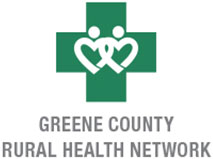Binge Drinking
What is “Binge” or “At-Risk” Drinking?
- For Men: drinking five or more drinks on the same occasion (i.e., at the same time or within a couple of hours of each other) and more than 15 drinks per week.
- For Women: drinking four or more drinks on the same occasion (i.e., at the same time or within a couple of hours of each other) and more than 8 drinks per week.
No matter how much alcohol is consumed, the body can process only one drink per hour.
What’s one drink?
Many people are surprised to learn what counts as a drink.
| 12 fl oz of regular beer | 8-9 fl oz of malt liquor (shown in a 12- oz glass) | 5 fl oz of table wine | 3-4 fl oz of fortified wine (such as sherry or port; 3.5 oz shown) | 2-3 fl oz of cordial, liqueur, or aperitif (2.5 oz shown) | 1.5 fl oz of brandy or cognac (a single jigger or shot) | 1.5 fl oz shot of 80-proof distilled spirits |
|---|---|---|---|---|---|---|
 |
 |
 |
 |
 |
 |
 |
| about 5% alcohol | about 7% alcohol | about 12% alcohol | about 17% alcohol | about 24% alcohol | about 40% alcohol | 40% alcohol |
NOTE on Different Standards for Men and Women
Research shows that women start to have alcohol-related problems at lower drinking levels than men do. One reason is that, on average, women weigh less than men. In addition, alcohol disperses in body water, and pound for pound, women have less water in their bodies than men do. So after a man and woman of the same weight drink the same amount of alcohol, the woman’s blood alcohol concentration will tend to be higher, putting her at greater risk for harm.
Binge drinking definition from the National Institute of Alcohol Abuse & Alcoholism and the Federal Substance Abuse and Mental Health Services Administration.
Who Binge Drinks?
According to the CDC, one in six adults are binge drinkers and at least 25% do this weekly. One in four adults who binge drink consume at least eight drinks during a binge. Binge drinkers are twice as common in men than women and 50% are young adults ages 18 – 34. Binge drinking is more common in households with an income of $75,000 or more, rather than lower incomes.
While older binge drinkers are less common, they tend to drink more. More than half of binge drinks are consumed by adults 35 and older.
Harm Caused By Alcohol
Alcohol-related problems are among the most significant public health issues in the Unites States. People who drink heavily have a greater risk of:
- Liver disease
- Heart disease
- Sleep disorders
- Depression
- Stroke
- Stomach bleeding
- Memory impairment
- Cancer of the mouth, throat, esophagus liver, and colon.
- Drinking during pregnancy can cause brain damage and other serious problems in the baby.
Heavy drinking also carries more indirect risks. It makes it harder to manage other conditions such as diabetes or high blood pressure and increases the risk of sexually transmitted infections from unsafe sex. Drinking too much alcohol increases your chances of being injured or even killed. Alcohol is a factor, in about 60% of fatal burn injuries, drowning, and homicides; 50% of severe trauma injuries and sexual assaults; and 40% of fatal motor vehicle crashes, suicides, and fatal falls.
Changing Your Drinking Habits
It’s up to you to change your drinking patterns. Don’t be surprised if you continue to have mixed feelings. You may need to re-make your decision several times before becoming comfortable with it. Weighing your pros and cons can help. What can you gain, and what barriers do you need to be aware of? Don’t wait for a crisis; making a change earlier is more likely to be successful.
For some people, staying within low-risk limits will be sufficient, whereas for others it’s best to quit. It’s a good idea to discuss different options with a doctor, a friend, or someone else you trust.
Quitting is strongly advised if you:
- Try cutting down but cannot stay within the limits you set.
- Have had an alcohol use disorder or your doctor has concluded you now have symptoms
- Have a physical or mental condition that is caused or worsened by drinking.
- Are taking a medication that interacts with alcohol.
- Are or may become pregnant.
If none of the conditions above apply to you, then talk with your doctor to determine whether you should cut down or quit based on other health factors.
Are you ready to quit or cut back? Click here to start developing your action plan.
If you feel you or a loved one may need professional counseling regarding alcohol consumption, please contact Twin County Recovery Services.





